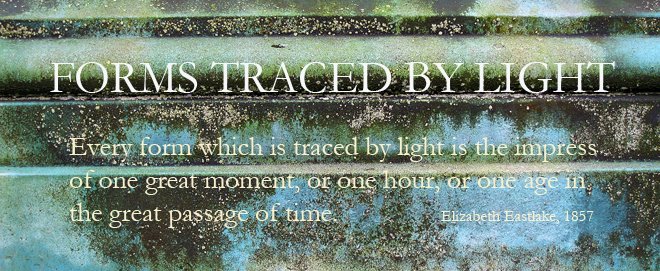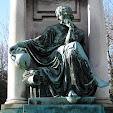
More from Tent State! - the most perfect label. Yesterday there were no clouds in sight anyway: today there were quite a few - but judging by the positioning of the notice, it's not attempting to be meteorologically referential. It does, however, fit in very nicely with the ability of the narrator in Cortazar's short story "Blow Up" to become distracted each time another cloud formation floats past... "and again the clouds begin to come, two at a time, three at a time," like they do. And one's left wondering whether the clouds in the tale have any symbolic function, or not, just as it's unclear whether this notice has any purpose whatsoever. Perhaps the artists was apprehensive that, without a descriptive word, we wouldn't recognize white fluffy things on a blue ground for what they are?
They do, all the same, bear some resemblance to the wonderful clouds that we looked at very briefly during the course, photographed by Byron Wolfe: "The Life of a Cloud" is at the top of his web page, and is an idea of such wonderful simplicity that one's very sad not to have thought of it oneself. Wolfe does a good deal of work with Mark Klett, especially in the area of rephotography - tracking down sites first stood on by photographers like Sullivan and Muybridge in the C19th, and seeing what's there now - and in the environmental recording and commentary on the American West more generally: their current show is in Phoenix, and will be traveling to the Autry in the fall... where I shall do my best, somehow, even with the travails of chairing, to catch up with it.



















 Not that it was at all spring-like today - very cold, very wet - and indeed tomorrow night a quite definite frost is forecast - but the leaves were doing their very best to unfurl from the damp trees. I spent a very uncomfortable ten minutes or so trying to find the best way to take photographs of these soaked young leaves - a macro lens? a telephoto lens? flash? and diving indoors to change from one to the other. Some of the pictures ended up interestingly over-exposed, and gave off the impression that as well as rain there was a thick Scottish mist: this, however, just about conveys the idea that it looks as though it was quite hard work for the leaves to make it out for Easter.
Not that it was at all spring-like today - very cold, very wet - and indeed tomorrow night a quite definite frost is forecast - but the leaves were doing their very best to unfurl from the damp trees. I spent a very uncomfortable ten minutes or so trying to find the best way to take photographs of these soaked young leaves - a macro lens? a telephoto lens? flash? and diving indoors to change from one to the other. Some of the pictures ended up interestingly over-exposed, and gave off the impression that as well as rain there was a thick Scottish mist: this, however, just about conveys the idea that it looks as though it was quite hard work for the leaves to make it out for Easter.









